📍 This post explores the intricate psychological dynamics between Oh Beom-seok and Ahn Su-ho in Weak Hero Class 1, drawing from official script book details, deleted scenes, and careful analysis of their tragic relationship arc.
📢 Fair Use Notice
This post contains copyrighted material from “Weak Hero” (© Wavve/Netflix) used for educational analysis, criticism, and commentary purposesunder fair use doctrine. All rights belong to original creators.
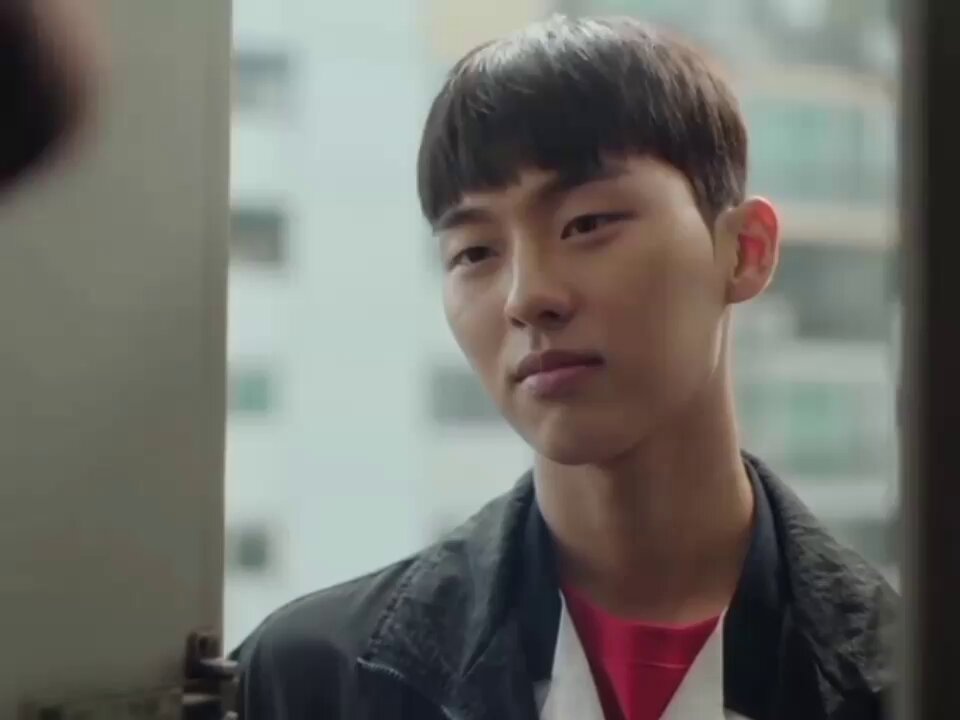
💬 When fans discuss the most unsettling aspects of Weak Hero Class 1, Beom-seok consistently emerges as the character who generates the most visceral reactions.
🥲 Unlike the more fantastical elements of the series, Beom-seok feels disturbingly familiar—he’s the type of person many of us have encountered in real life. As one insightful viewer noted, “Beom-seok feels like someone we know,” and that recognition is precisely what makes his obsession with Su-ho so chilling to watch unfold.
Director Yoo Soo-min has acknowledged that Si-eun works as a character largely because of Park Ji-hoon’s exceptional performance, creating someone who might be too idealized for reality. Su-ho, while more grounded, represents a rare type of person—genuinely protective, emotionally stable, naturally charismatic.
But Beom-seok? Beom-seok is terrifyingly ordinary in his dysfunction, representing patterns of behavior that exist in countless real-world scenarios.
What appears on the surface to be a simple case of jealousy and betrayal reveals itself, upon closer examination, to be one of the most nuanced portrayals of attachment disorder, trauma response, and unrequited emotional need in recent K-drama history.

The Foundation of Obsession: Understanding Beom-seok’s Background
To understand Beom-seok’s fixation on Su-ho, we must first acknowledge the profound emotional void that shaped his entire worldview. As an orphan who was later adopted by politician Oh Jin-won, Beom-seok never experienced unconditional love or emotional security 😔 His adoptive father’s political career took precedence over nurturing, and when Beom-seok failed to meet expectations, he faced physical and emotional abuse.
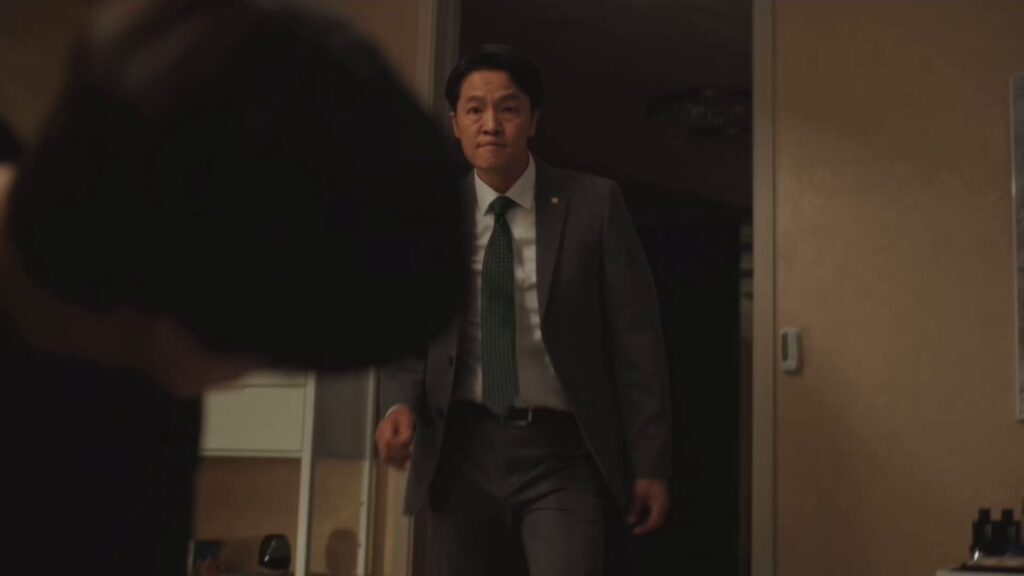
What makes Beom-seok particularly disturbing isn’t his dramatic final act of violence—it’s the steady escalation of recognizable toxic behaviors that lead up to it. His constant need for validation, his inability to accept boundaries, his tendency to test relationships through manipulation, and his eventual violent outburst when things don’t go his way—these are patterns that exist in real relationships, in real schools, in real workplaces.

Script Book Revelations: The Deleted Scenes That Change Everything
The official Weak Hero Class 1 script book reveals crucial details about Beom-seok’s feelings that didn’t make it into the final cut—details that fundamentally alter our understanding of his psychology.
In the deleted Han River scene, where Su-ho and Beom-seok drink beer together after their pool game, the script contains specific directorial notes that are impossible to ignore.
The instructions state that:
“Beom-seok smiles shyly, enjoying Su-ho’s arm around his shoulder” and that during their conversation, “he agrees with and laughs at whatever Su-ho says.”
These aren’t descriptions of casual friendship—when I read these directorial notes, I couldn’t help but wonder: did the production team ever give Si-eun similar directing when he was with Su-ho? Reading these specific instructions about Beom-seok “enjoying Su-ho’s arm around his shoulder” and “agreeing with whatever Su-ho says,” it felt to me like watching someone on a date, heart fluttering while alone with their crush.
The contrast was striking—Si-eun, even in his closest moments with Su-ho, was never directed to display this level of physical awareness and emotional dependency that the script specifically calls for with Beom-seok.

Even more telling is the scene before their cafe meeting with Si-eun and Yeong-i, where Beom-seok fixes his appearance, checking his clothes and hair before looking at Su-ho’s Instagram.
Given that this drama had only 8 episodes to pack in every character’s storyline, every scene had to be compressed and loaded with meaning.
That’s what made the deliberate choice to include a close-up of Beom-seok adjusting his hair and checking his appearance in the mirror feel so significant to me. In a series where every second counted, why dedicate screen time to this particular moment unless it was meant to convey something specific about his emotional state and intentions?

📚 Reading through the script book, I felt that these details suggested the production team was deliberately crafting Beom-seok’s character to display signs of romantic attraction toward Su-ho, even if they chose not to make this explicit in the final edit.
When I encountered these directing choices, I personally interpreted them as hints toward Beom-seok’s deeper feelings for Su-ho. The decision to cut some of these scenes likely stemmed from concerns about how intensely to portray Beom-seok’s feelings without overshadowing the main narrative, though this is just how I understood their creative process.
The Instagram Incident: A Symbol of Deeper Rejection
The Instagram follow situation serves as the perfect microcosm of Beom-seok’s psychological state and his relationship with Su-ho. On the surface, it seems like a trivial teenage concern—who follows whom on social media. But for Beom-seok, this became a symbol of acceptance versus rejection, inclusion versus abandonment.

When Beom-seok discovered that Su-ho followed Yeong-i but hadn’t reciprocated his own follow request, it confirmed his deepest fears about his worth and place in Su-ho’s life. For someone with abandonment trauma, social media interactions become loaded with meaning. Every like, follow, and response carries weight that others might find disproportionate.
The brilliance of this plot device lies in its relatability. Most viewers can understand the sting of social media rejection, even if they wouldn’t react as extremely as Beom-seok. It grounds his larger psychological issues in something universally recognizable, making his eventual breakdown feel both shocking and inevitable.
What makes this even more tragic is that Su-ho likely had no idea about the significance Beom-seok placed on this interaction. Su-ho’s casual approach to social media versus Beom-seok’s desperate need for digital validation represents their fundamental incompatibility—not in terms of friendship potential, but in their emotional languages and needs.
The Test of Violence: Su-ho’s Physical Aggression as Betrayal
One of the most insightful analyses I’ve encountered from viewers focuses on a crucial turning point that many overlook:
Su-ho’s physical aggression toward Beom-seok and how it fundamentally altered their relationship dynamic. The karaoke wall shove and the cafeteria push weren’t just moments of conflict—they were devastating betrayals from Beom-seok’s perspective.

Even if Su-ho and Si-eun didn’t fully understand the extent of Beom-seok’s abuse at home, they knew how bullies had treated him at his previous school. For someone with Beom-seok’s trauma history, having Su-ho resort to the same physical intimidation tactics must have felt like losing his safe person.
The cafeteria scene becomes particularly tragic when viewed through this lens. One subscriber brilliantly analyzed that Beom-seok appeared to be testing Su-ho—would Su-ho treat him the same way everyone else did? When Su-ho gave in to his sense of justice and anger instead of recognizing what was happening, he failed that test spectacularly.
The fact that Su-ho looked at Si-eun for so long before acting suggests he did understand what was occurring, which makes his choice to push Beom-seok even more damaging.
I completely agreed with her interpretation of this scene.
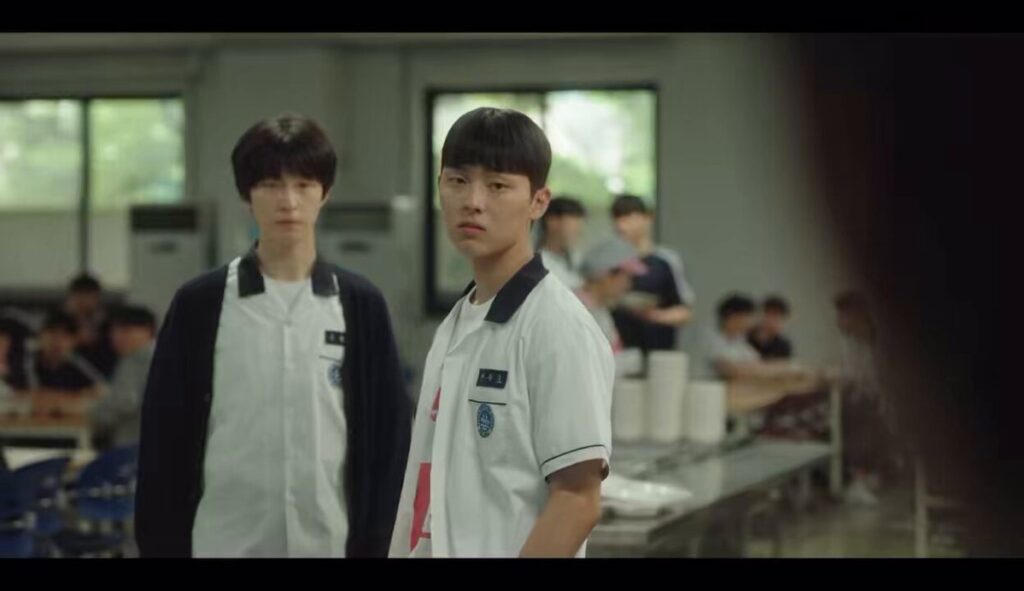
This moment represents the death of Beom-seok’s idealized version of Su-ho. The person he’d placed on a pedestal, the one who was supposed to be different from all the others who had hurt him, had just proven that he was capable of the same violence. For Beom-seok, this wasn’t just disappointing—it was psychologically devastating.
The “Line” That Beom-seok Crossed: Su-ho’s Boundaries
Su-ho operates with clear emotional boundaries, and once someone crosses his line, he cuts them off completely. This becomes evident in episode 6 when Yeong-bin asks Beom-seok,

“Hey, didn’t Ahn Su-ho block your number?”
We can’t know for certain whether Su-ho actually blocked him or not, but what’s telling is Beom-seok’s reaction to this teasing. His terrifying expression and angry response reveal how deeply this possibility affects him.

What’s particularly significant is that Beom-seok had never talked back to Yeong-bin’s group like this before—this was the first time we saw him react so defensively and emotionally to their taunts, showing just how sensitive he was about his relationship with Su-ho.
The physical violence had already damaged their relationship, but being completely cut off from Su-ho’s “line” of people who matter was the psychological death blow that sent him spiraling toward his final, devastating actions.
Hong Kyung’s acting in this moment perfectly captures the horror of someone realizing they’ve lost the one person whose acceptance they craved most. Su-ho’s boundary-setting, while healthy for him, became the catalyst for Beom-seok’s complete psychological breakdown.
The Psychology of Targeting: Why Beom-seok Chose His Victims
Beom-seok’s choice of victims reveals the calculated nature of his psychological patterns, learned from years of abuse. His adoptive father had taught him that “the best way to stay safe is to beat someone who’s weaker or already weakened.” This twisted survival mechanism explains why Beom-seok consistently targeted vulnerable individuals.
When he kidnapped Yeong-i, it seemed to many viewers and myself that he was almost certain she and Su-ho were having a sexual relationship. His probing questions to her gave us the impression that he was trying to confirm what he suspected about their relationship. We had deep discussions about this interpretation in the comments.

“Are you dating Ahn Su-ho? Relationships are all about give and take. That guy lets you sleep at his house and gives you a job. What have you given Su-ho in return?”
This interrogation exposes Beom-seok’s transactional view of relationships, shaped by his experience with conditional love. He couldn’t comprehend Su-ho’s kindness toward Yeong-i without assuming she was providing something in return. Having never experienced unconditional care, Beom-seok couldn’t recognize it when he saw it.
The Moment of Explosion: Understanding the Ring Scene
The ring fight between Su-ho and Beom-seok serves as the climactic release of all the psychological tension that had been building throughout their relationship.
Hong Kyung’s performance in this scene is particularly noteworthy because he manages to convey that Beom-seok’s final violence wasn’t purely evil—it was the impulsive explosion of all the conflicted love-hate feelings toward Su-ho that had built up over their brief but intense friendship of just about a month.
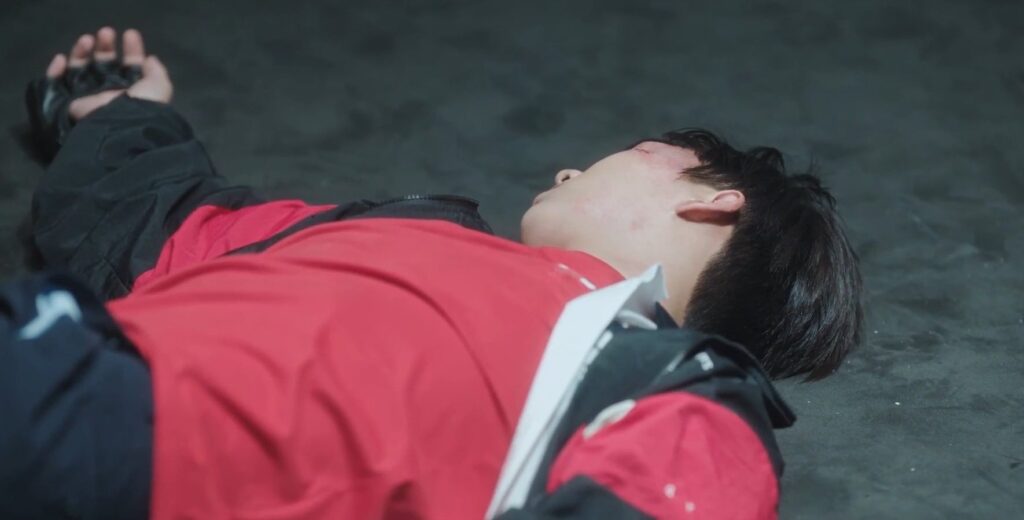
When Beom-seok kicks Su-ho’s head in that final moment, the camera angle deliberately mirrors earlier scenes of his adoptive father’s abuse. This visual parallel suggests that Beom-seok was projecting all his hatred and pain from his father’s violence onto Su-ho. In that moment of rage, Su-ho became a symbol of everyone who had ever hurt him, everyone who had ever had power over him.

The tragedy is that Su-ho had no idea he carried this symbolic weight for Beom-seok. From Su-ho’s perspective, he was simply trying to reach his friend, to stop him from making terrible choices. He couldn’t have known that his very presence represented everything Beom-seok both desperately wanted and violently resented.
The Unanswered Questions: Romantic Feelings or Extreme Attachment?
While the drama never explicitly addresses Beom-seok’s sexual orientation, I felt that the script book details and directorial choices strongly suggested his feelings for Su-ho transcended typical friendship.
Reading through the script book, I believed my initial suspicions about his romantic feelings were validated. However, the question of whether these feelings were romantic becomes less important than understanding their intensity and impact.
Whether we label Beom-seok’s feelings as romantic love, intense attachment, or obsessive fixation, the result remains the same: he placed Su-ho at the center of his emotional universe in a way that was neither healthy nor sustainable. Su-ho became Beom-seok’s entire sense of self-worth, his validation, his escape from trauma—a burden no single person should carry.

The brilliance of Weak Hero’s writing lies in its refusal to simplify these emotions. Beom-seok’s feelings exist in the gray area between love and obsession, between desperate need and romantic attraction. This ambiguity makes his character more realistic and tragic, as real human emotions rarely fit into neat categories.
The Cycle of Violence: How Abuse Creates Abusers
Beom-seok’s story serves as a stark illustration of how childhood abuse creates cycles of violence. His adoptive father’s political ambitions and physical abuse directly contributed to creating someone who would eventually harm others. The show doesn’t use this as an excuse for Beom-seok’s actions, but it presents it as a tragic reality while still holding him accountable for his choices.
The most chilling aspect of Beom-seok’s character development is how logically his violence follows from his experiences. He learned that might makes right, that the strong survive by dominating the weak, and that love must be earned through submission. These lessons, taught through years of abuse, became the foundation for his later actions.
Yet the drama also shows us moments where Beom-seok could have chosen differently. His friendship with Si-eun and Su-ho offered him alternative models for relationships based on mutual respect and genuine care. The tragedy is that his trauma responses were too deeply ingrained for him to fully embrace these healthier patterns.
The Question of Forgiveness: Can Su-ho Ever Forgive?
Among fans, one of the most debated questions is whether Su-ho would ever forgive Beom-seok if given the chance. Based on Su-ho’s character patterns and his clear boundary-setting, the answer seems unlikely.
This discussion about whether to accept his apology is definitely a hot topic among fans. A few days ago I told a subscriber that I think Su-ho would take it lightly – even if Beom-seok apologized, Su-ho would be like “okay, got it, let’s forget about it.”
Not because he forgave Beom-seok, but because his mentality isn’t weak enough to be held back by the past. It’s already over and he’s someone who needs to move forward, so he’d probably focus on the present – waking up and the precious people in his life like his grandmother and Si-eun. That’s just who Su-ho is as a person, that was my take.
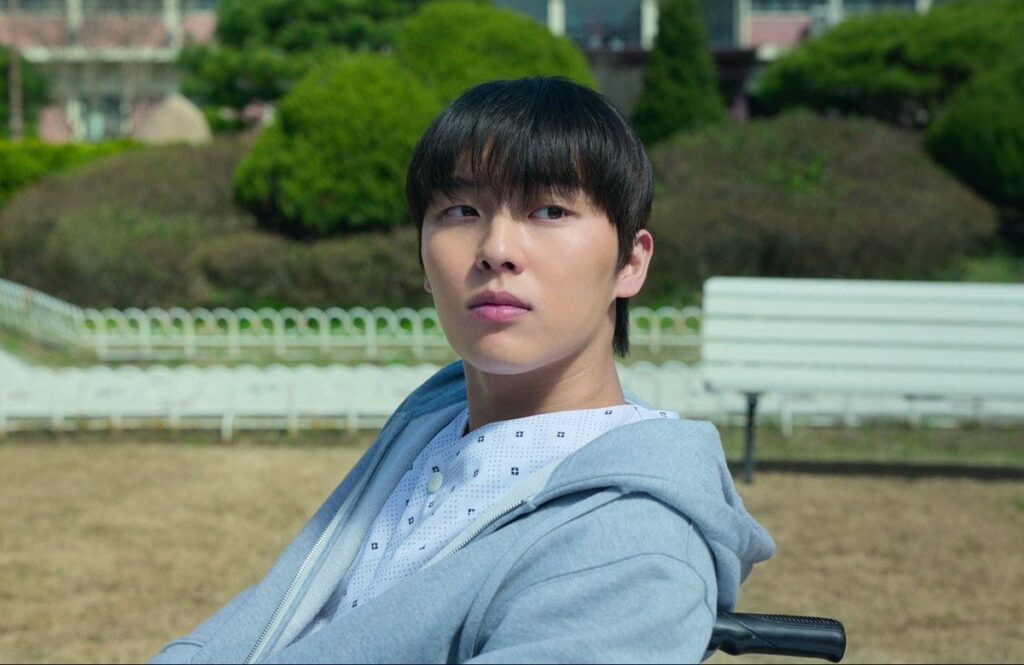
Lessons from Tragedy: What Beom-seok’s Story Teaches Us
Beom-seok’s arc serves as a powerful illustration of how untreated trauma and unhealthy attachment patterns can escalate into violence. His story highlights the importance of recognizing warning signs in relationships and understanding how childhood abuse creates psychological vulnerabilities that persist into adulthood.
The drama’s portrayal of Beom-seok also demonstrates the complexity of victim and perpetrator dynamics. Someone can simultaneously be a victim of abuse and a perpetrator of violence. Understanding this duality doesn’t excuse harmful behavior, but it does provide insight into how cycles of trauma perpetuate themselves across generations.
The Performance That Brought It All to Life
Hong Kyung’s portrayal of Beom-seok deserves special recognition for its nuanced depiction of psychological complexity. He managed to make Beom-seok simultaneously sympathetic and terrifying, vulnerable and dangerous. His performance never asks viewers to excuse Beom-seok’s behavior, but it helps us understand the psychological mechanisms that drive it.

I was amazed by the subtlety of Hong Kyung’s acting—the way I watched him show Beom-seok’s hero worship of Su-ho transforming into resentment, his desperate need for acceptance curdling into violent entitlement.
What struck me most was his ability to convey Beom-seok’s internal conflict, especially in the final episodes where love and hate become indistinguishable, elevating what could have been a simple villain role into one of the most psychologically realistic portrayals of obsessive attachment I’ve seen in recent drama.
Conclusion: The Tragedy of Misplaced Love
What I took away from Beom-seok’s story is that love without emotional intelligence, attachment without boundaries, and need without self-awareness can become just as destructive as hate. To me, his obsession with Su-ho wasn’t the opposite of love—it was love distorted by trauma into something unrecognizable.
I think Su-ho and Beom-seok’s relationship will stick with me as one of the most complex and heartbreaking dynamics I’ve watched in K-drama.
It showed me how excellent writing and acting can reveal the darker sides of human psychology in ways that feel real and devastating.
💭 What do you think about Beom-seok’s psychology and his relationship with Su-ho? Do you see his feelings as romantic obsession, trauma-based attachment, or something else entirely? Share your thoughts and analysis in the comments below.
Want to hear these Su-ho scenes analyzed with original audio examples and cultural context? Check out my full analysis in the video: 🔗 The Wordplay That Made Si-eun Laugh | Subscriber request #weakheroclass1 where I break down these scenes with audio examples and cultural context!
🔗 Check out the complete narrative of Su-ho and Beom-seok’s friendship arc in this comprehensive post
🔗 Related Posts by Character & Language
📚 Si-eun (시은) Analysis
English Posts
- Si-eun’s Episode 8 Revenge: Why the “Implausible” Critique Completely Misses the Point
- Why Si-eun is a Character Magnet: The Psychology Behind Weak Hero’s Most Compelling Relationships
- Si-eun’s Hidden Violence: An Exploration
- Si-eun’s Revenge Debate: Core Fan Comments Compilation
🥊 Su-ho (수호) Analysis
English Posts
- Su-ho’s Lost Comedy Gold: The Wordplay That Made Weak Hero Fans Fall in Love (But English Subtitles Missed Everything)
- The Untold Story of Su-ho and Beom-seok: Why Their Friendship Was Doomed from the Start
Korean Posts
💔 Beom-seok (범석) Analysis
English Posts
- When Dreams Become Prison: Analyzing Beom-seok’s Boxing Ring Appearance in Si-eun’s Dreams
- When Subscribers Become Psychology Experts: Two Brilliant Takes on Why Beom-seok Destroyed Su-ho in That Ring
- Beom-seok’s Obsession with Su-ho: The Tragic Psychology Behind Weak Hero’s Most Complex Relationship
⚡ Seong-je (성제) Analysis
English Posts
🤝 Character Dynamics
English Posts
- Su-ho and Si-eun’s Relationship: When Fans Ask the Hard Questions About Weak Hero’s Most Debated Bond
- Understanding Yeong-i: The Character Who Reveals Everything About Weak Hero’s Heart
- Was Yeong-i Added to Tone Down the Bromance? When Subscribers Drop Literary Masterpieces in My Comments
- Jun-tae’s Japanese Mystery and the Heartwarming Go-tak Friendship in Weak Hero Class 2
🎭 Behind-the-Scenes & Analysis
English Posts
- Weak Hero Class 1 Script Book: Behind-the-Scenes Secrets That Will Change How You See the Show
- Script Book vs Final Cut: The Dream Scene That Made Us All Cry
- The Complete Behind-the-Scenes Story of Weak Hero Class 1 – Answering Subscriber Questions
- Weak Hero Class Change Video Explanation: Actors Switching Roles
- Weak Hero Deleted Scene Delivery! Beuksan High’s #1 Taking Down Bullies
🌍 Fan Community & Cultural Analysis
English Posts
- Weak Hero Fans Are Going INSANE and I’m Here for It: The Comments That Broke My Brain
- The Joy of Global Connection: Discussing Weak Hero’s Most Complex Relationships with Fans Around the World
- When International Fans Decode Korean Bromance: Why Weak Hero Reads as BL Overseas
- Three Questions That Reveal Weak Hero’s Hidden Korean Realism
- Why These Three Friends Always Sit Together During Exams (And Other Translation Secrets)
Korean Posts
📊 Quick Navigation by Interest
⚡ Character Dynamics:
- Su-ho and Si-eun’s Relationship
- Beom-seok’s Obsession with Su-ho
- When International Fans Decode Korean Bromance
🧠 Psychology Deep Dives:
- When Subscribers Become Psychology Experts
- Si-eun’s Episode 8 Revenge
- Why Si-eun is a Character Magnet
🎬 Behind-the-Scenes Content:
🌐 Translation & Cultural Context:
⚠️ Site Policies & Legal Information
✅ About JennieKdrama.com: This blog provides personal fan analysis and reviews of K-dramas, focusing on school action series like ‘Weak Hero.’ All content represents individual opinions and interpretations from a fan perspective, unrelated to official production teams.
⛔️ Copyright Disclaimer: All drama footage, images, and references belong to their respective copyright holders including streaming platforms and original creators. Materials are used minimally for educational criticism and analysis with no intention of copyright infringement.
🚫 Privacy Policy: This site follows standard web policies and does not directly collect personal information beyond basic analytics for content improvement. We use cookies to enhance user experience and may display advertisements.
📳 Contact: For questions or concerns, please use the comment sections or contact forms provided. This is fan-created content respecting all original copyrights – we are not responsible for any losses or damages resulting from our content interpretations.

Leave a Reply